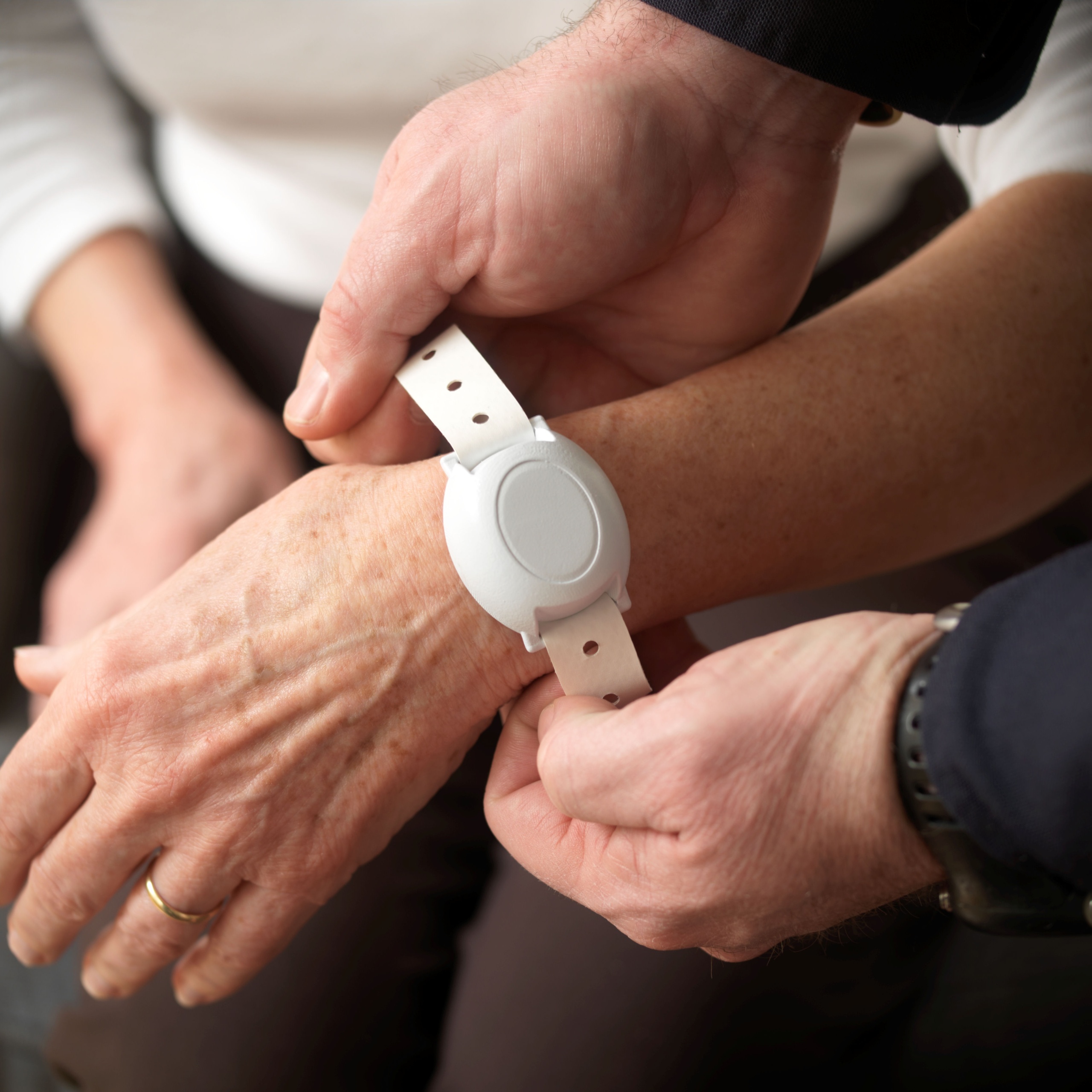
What is Project Lifesaver?
Project Lifesaver is an innovative and rapidly growing program in the United States that provides aid to victims and families suffering with Alzheimer’s Disease and related disorders such as Down’s Syndrome and Autism. Project Lifesaver uses state-of-the-art technology employing wristband transmitters to locate wandering and lost adults and children. Project Lifesaver is much more than a passive ID bracelet. It is an active system that relies on state of the art technology and a specially trained search and rescue team. People who are part of the Project Lifesaver program wear a personalized bracelet that emits a tracking signal.
When caregivers notify our dispatch center by that the person is missing, a search and rescue team responds to the wanderer’s area and starts searching with the mobile locator system. The Chatham County Sheriff’s Department, ground and air units, are also notified and assist with the search. Search times have been reduced from hours and days to minutes. In hundreds of searches, there have been no reported serious injuries or deaths. Recovery times average less than 30 minutes.
How does it work?
Citizens enrolled in Project Lifesaver wear a small personal transmitter around the wrist or ankle that emits an individualized tracking signal. If an enrolled client goes missing, the caregiver notifies their local Project Lifesaver agency, and a trained emergency team responds to the wanderer’s area. Most who wander are found within a few miles from home, and search times have been reduced from hours and days to minutes. Recovery times for PLI clients average 30 minutes — 95% less time than standard operations.
Let's get your loved one enrolled!
Fill out the information below and we will be glad to get back with you to enroll your loved one.
Does it cost anything?
You may be asking “Now all this sounds nice but how do I sign up and how much does it cost?”
We have two different plans available now to acquire a bracelet for your loved one.
- A one time purchase of $300.00 which will cover one year of batteries and bracelets, after that $10.00 a month will cover the cost of your membership.
- A $20.00 lease to own plan, which after 24 months you will own your transmitter, like above you will be responsible for a $10.00 a month membership fee.
Your $10.00 a month fee covers our cost for battery replacement and band replacement. You will not have to worry about changing the battery yourself, a Firefighter will arrive once a month to ensure the battery replacement is completed. You will be provided with test equipment to perform a daily check of your loved ones bracelet.
Don't let cost turn you away!
Clients of Project Lifesaver Islands Division can qualify for the Charlie Lamas Scholarship program. This scholarships helps with all cost.
Charlie Lamas was a former Chief of our division and played a large part in starting Project Lifesaver to the Islands area.
Project Lifesaver Overview
Currently, over 1,400 member agencies in 48 states participate in the program—police, sheriff, fire, public safety departments and other emergency responders. The method relies on proven radio technology and specially trained search and rescue teams. Citizens enrolled in Project Lifesaver wear a small transmitter on the wrist or ankle that emits an individualized tracking signal. If an enrolled client goes missing, the caregiver notifies their local Project Lifesaver agency, and a trained emergency team responds to the wanderer’s area. Most who wander are found within a few miles from home, and search times have been reduced from hours and days to minutes. Recovery times for PLI clients average 30 minutes — 95% less time than standard operations.
Citizens, municipalities and local Alzheimer’s groups have tried to speed the rescue operation by creating registries and Silver Alert programs that provide first responders with identification information, physical descriptions and photographs of registrants. While this is a step in the right direction, the identification bracelets worn by the registrants in these programs can only facilitate the rapid return of the individual once they are found. This does not consider whether the person was found alive.

